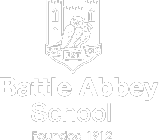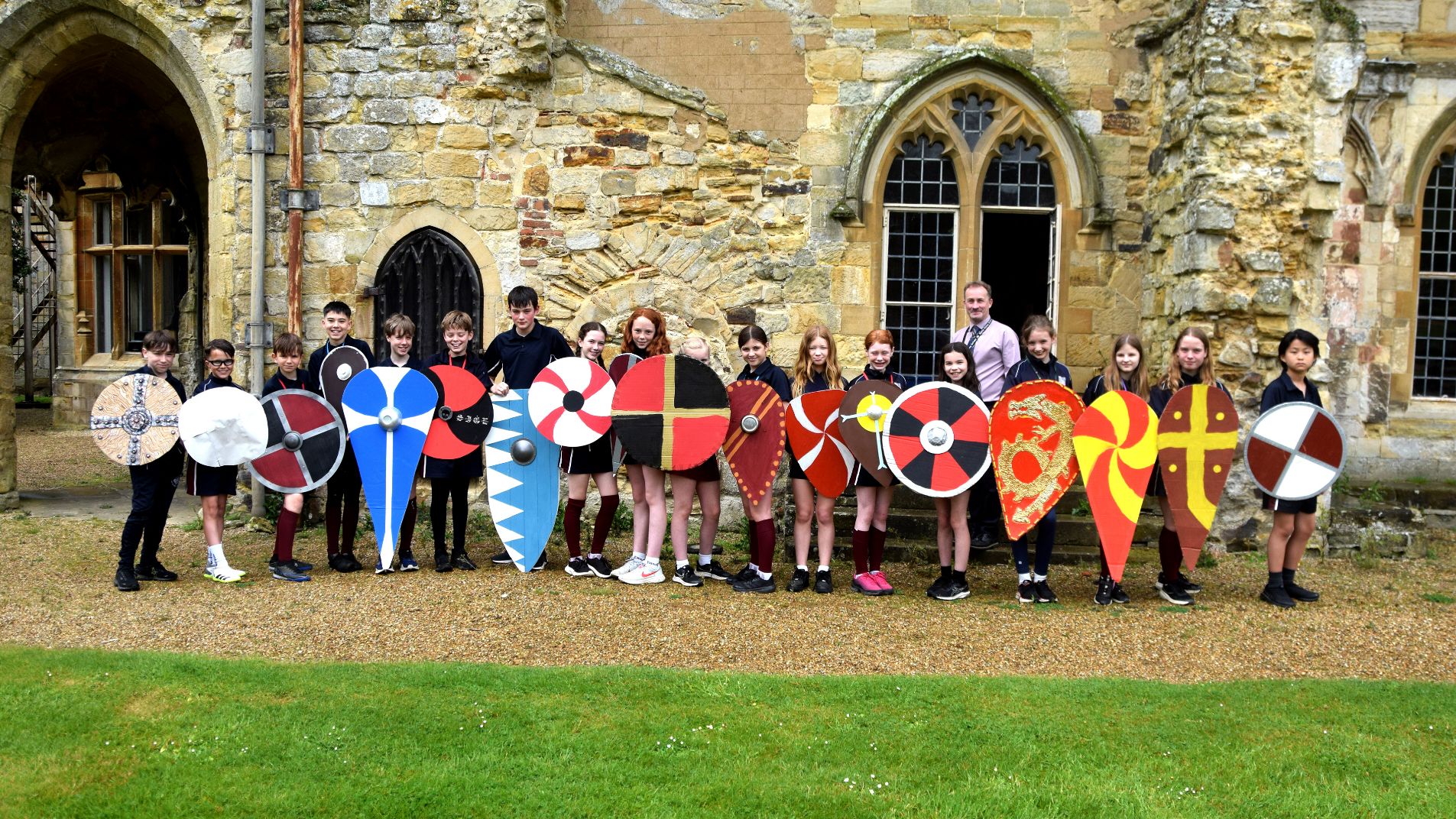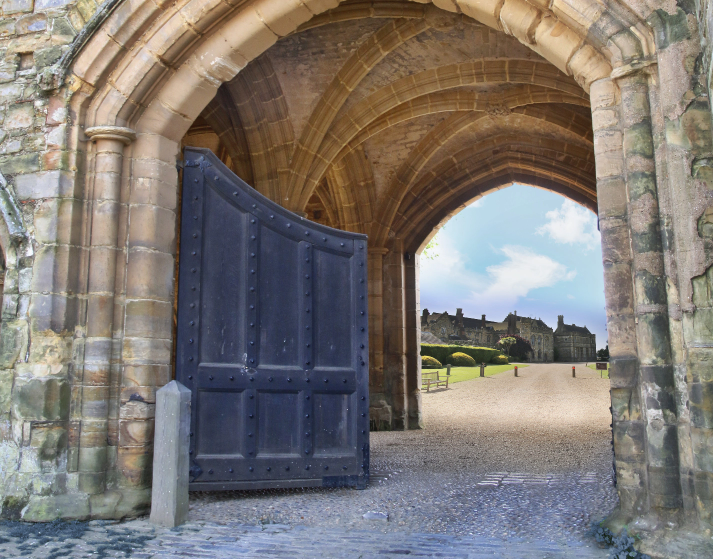FIRM FOUNDATIONS, FORGING THE FUTURE
The site occupied by the Senior School, dates back to the beginning of modern British history, with commanding views over the very battle field where William the Conqueror defeated King Harold in 1066.
The Abbot’s house was built in the thirteenth century, whilst a monastery grew up around the church. A substantial part of the main school building originates from that time, the most modern addition from the 16th Century. At the time of the Reformation, many of the Abbey buildings were destroyed but the Abbot’s house passed into private hands.
The School was founded in 1912 in Bexhill as a small and exclusive finishing school for girls, (then named St. Etheldreda’s School) overlooking the Golf Links and sea. Ten years later, the school had outgrown the premises, and following a chance bicycle visit that Easter to the uninhabited Battle Abbey site, the staff and thirty-five girls subsequently moved in on 22 September 1922. Battle Abbey School has been in continuous occupation since that date, and generations of pupils have experienced a sense of privilege at being educated in such majestic surroundings.
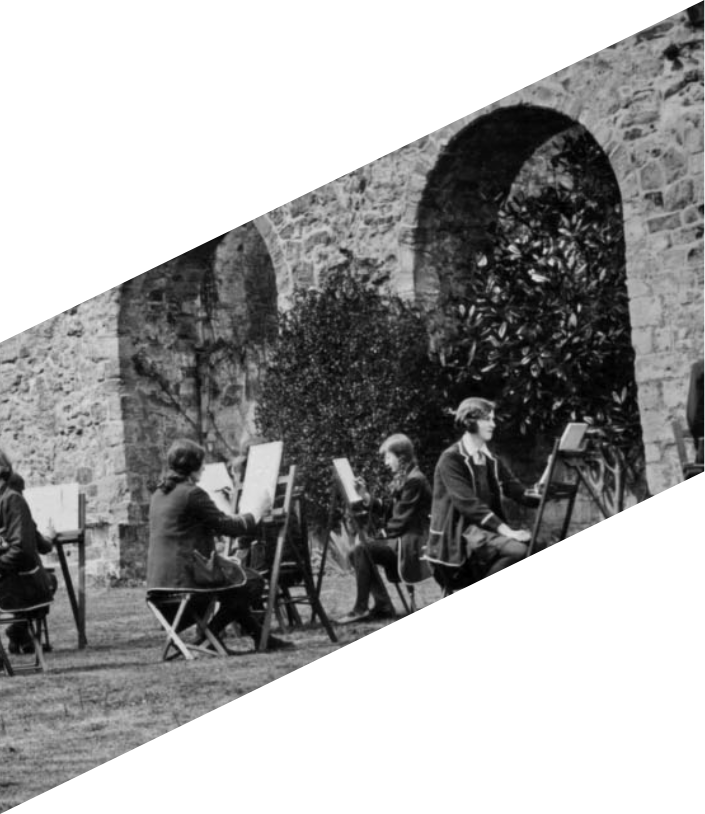
To all who have loved their school, to them does it belong for ever. You are still links in a precious chain whose strength and work are drawing us slowly, but every surely, up and always up away from the commonplace, nearer the Ideal. You wear our badge, and all you do does matter to us. In the hurly-burly of everyday life these things are not said – they appear to be forgotten – they are not. The Gateway is ever open to you, you are always welcome in our hearts and in our home.
Mrs May Jacoby, Headmistress and co-founder (1912-1943), writing in the first edition of The Gateway, 1928.
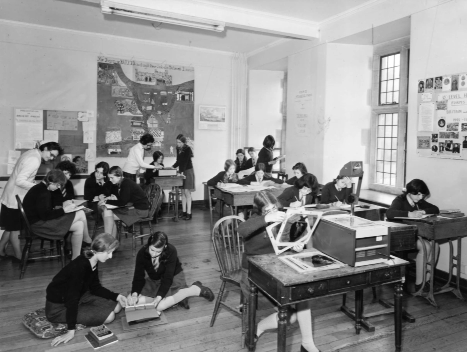
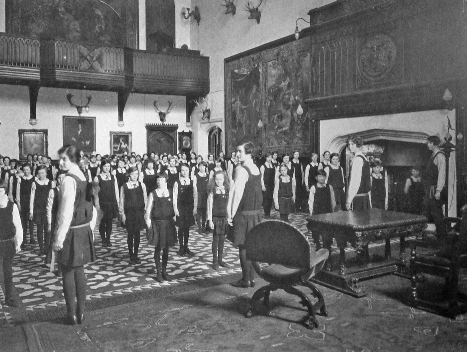
ln 1989 the all-girls school merged with Glengorse and Hydneye, a local prep school and, becoming coeducational, accepted pupils from kindergarten to university age. In 1995, following a merger with Charters Ancaster, the school transferred the Prep School to a new site in Bexhill, adding a Nursery, playing fields, an astro turf pitch and a magnificent indoor swimming pool to its facilities.
More recently the school purchased the building that was formerly the Yesterday’s World Museum. A stones throw from the Abbey Gatehouse, the site houses our dedicated Sixth Form Centre including a common room, café with outdoor decking, a garden, a gym and a large conference space, as well as many smaller teaching spaces. Many of the original museum fixtures have been kept with vintage shop fronts now displaying pupils’ work.
In 2025 Battle Abbey consolidated its boarding provision by purchasing the former Leeford Place Hotel. Leeford Lodge as it is now called, is a brand new Boarding house set in 15 acres of grounds just outside Battle and opened its doors to its first boarding cohort in September 2025.
1912 was a Leap Year, starting on a Monday. It was the year that parachutes were invented, when the “unsinkable” Titanic sank and when there was much excitement at the discovery of the ‘missing link’ – the ‘Piltdown Man’ (later proved to be fraudulent).
It was also the year when Mrs Jacoby and Miss Sheehan-Dare founded ‘St Etheldreda’s High-Class School for Girls’ in Bexhill-on-Sea. Their aim was to provide “a thorough and modern education amidst healthy surroundings, and to combine the care and refinement of home with the advantages of school life.” The fee for pupils under the age of 14 was “30 Guineas per Term”.
As the next 8 years passed, the world saw major events: the first crossword puzzle (1913); Charlie Chaplin as ‘The Little Tramp’ & the start of World War One (1914); the Easter Rising in Ireland (1916); the Russian Revolution (1917) and the end of WW1 (1918). But the girls of St Etheldreda’s continued in their genteel education, including Nature Study, Class-Singing and Sewing.
The 1920s was a decade of ‘Flappers’ and Women’s rights. 1921 saw the Irish Free State proclaimed; insulin was discovered in 1923; the first Winter Olympic Games took place in 1924; in 1925, Hitler published ‘Mein Kampf’; and in 1926, A A Milne published ‘Winnie the Pooh’.
In 1922, the school left quiet Bexhill and moved into Battle Abbey, with its imposing sandstone Abbot’s House, full of banners, tapestries, oil paintings, and suits of armour. The pupil roll increased rapidly following the move, and by 1923 there were over 100 girls boarding at the Abbey. In 1926 the ‘House System’ was introduced. Mrs Jacoby penned the first words of the very first School Magazine, the Gateway in 1928. She wrote: “My thoughts stray from those who make a perpetual symphony of Youth around me to those who have passed through the Gateway to Life in the big World of Grown-ups, and to them I would send a special message. It is simply this, – To all who have loved their school, to them does it belong forever …”
The 1930s brought: Gandhi’s Salt March (1930); the Christ monument being built on a hilltop in Rio de Janeiro (1931); Amelia Earhart being the first woman to fly solo across the Atlantic (1932); the Loch Ness Monster being spotted (1933); King Edward VIII abdicating (1936); and the start of World War Two (1939).
One of the major events of this decade at Battle Abbey was, of course, when much of the Abbey was reduced to “a smouldering heap” in January 1931. The return of the staff and girls to Battle in 1933 was a testament to the School’s motto “Foy est Tout”. In 1939, Mrs Jacoby announced that “my son John and his wife have started a Preparatory School for boys at Vinehall … and I am so happy to be a Granny this year!”
The 1940s were dominated by World War Two: the Battle of Britain (1940); the Japanese attack on Peral Harbour (1941); Anne Frank goes into hiding (1942); the Warsaw Ghetto Uprising (1943); D-Day (1944); bombs being dropped on Nagasaki and Hiroshima (1945); followed by Ghandi being assassinated ((1948); China became Communist (1949); and the Soviet Union developed the atomic bomb (1949). On a rather more mundane level: ‘nylons’ were first on the market (1940); the ‘t-shirt’ was introduced (1942); ball-point pens first went on sale (1944); and the first bikini appeared (196).
The Army requisitioned Battle Abbey in 1940, allowing the staff and girls only 48 hours to vacate. By 1943 the site was occupied by a Canadian Infantry Battalion. Mrs Jacoby’s son John was given the same ultimatum, so both Battle Abbey School and Vinehall School relocated to Killerton Park in Devon between 1940 and 1945, but remained in separate wings of the mansion rather than forming a co-educational school. Life at BAS was pretty much back to normal on return to the Abbey. The girls entered the Hastings Festival, but they did not win a prize on this occasion…
The 1950s saw the first organ transplant (1950); the first colour television (1951); Princess Elizabeth becoming Queen, aged 25 (1952); Roger Bannister broke the 4-minute mile (1954); Rosa Parks refused to give up her seat on a bus (1955); Elvis Presley caused outrage when he gyrated on TV (1956); and the ‘Peace’ symbol was created (1958).
Values at Battle Abbey School stood strong! The Headmistress Helen Sheehan-Dare announced that four senior members of the ‘Old Girls’ Club’ would become school Governors, a move “best calculated to preserve the School’s individuality and its special character, and to ensure, as far as possible, its continuity.”
In the 1960s, ‘Coronation Street’ was first aired (1960); the Berlin Wall was built (1961); the Cuban Missile Crisis brought the threat of world war again (1962); the US sent troops to Vietnam (1965); England won the World Cup (1966); and humans first walked on the moon (1969).
At BAS, 1966 brought the 900th celebrations of the Battle of Hastings: HM Queen Elizabeth II and Prince Philip visited; in a marquee on the school grounds, “a film of the Bayeux Tapestry was shown throughout the day”; the Dean arranged a pageant, which ran for a week in St Mary’s Church, where the school choir and drama pupils played their part. Battle Council arranged competitions for local school children in Art, Essay Writing and Poetry. The Headmistress reported, however: “the response from the girls was disappointing, for there is much artistic and literary talent here …” Perhaps the girls were too busy doing the ‘twist’ in their Mary Quant mini-skirts!
The 1970s was a decade of strikes – postal workers, miners and dustbin men – ending in the ‘winter of discontent’ in 1979. But that didn’t stop the British nation celebrating the Queen’s Silver Jubilee in 1977 with street parties! In 1971 Britain ‘went decimal’, and during the Summer of 1976, the weather turned so dry that water supplies reached critically low levels. The first new big sound of the 1970s was “Glam Rock”; ‘Hippy Chicks’ wore hot pants and platforms; and the late 70s introduced the punk movement.
Things remained rather more genteel at BAS! Yet, as the Headmistress Miss Parker pointed out: “Changes! They are inevitable in any institution which is alive and worthwhile, we are proud at Battle that our traditions have preserved standards through the conflict of the outside world.” Indeed, by 1979, the ‘Official School Outfitters’ was no less than ‘Harrods of Knightsbridge’!
In the 1980s, technology exploded! Home computers such as Amstrad and Commodore were tested (1981); the ‘Windows’ program was invented by Microsoft (1985); and the World Wide Web was first suggested by Tim Berners-Lee (1989).
Meanwhile, at the Abbey in 1984, the new Headmaster, David Teall, was dealing with another kind of ‘explosion’: “With 53 new girls we opened this term with 140 on role and I have since had to turn away further applicants at the rate of about one a week. Furthermore, I have already received 17 firm applications for the 16 vacancies that there will be in the lower school next September and I haven’t advertised the scholarship yet! … We are a traditional English Girls’ Public School, and proud of it … We maintain very high standards of conduct and deportment against a background of declining moral standards and, I give you my word, we shall continue to do so.”
In August 1989, Battle Abbey School merged with neighbouring preparatory school, Glengorse, and in so doing, turned the Abbey into a co-educational school. It has never looked back …
By the 1990s, Information Technology had expanded even further – the World Wide Web was made available to the public and three million computers connected to the Internet (1991); the Pentium processor was invented (1993); the Sony PlayStation launched (1994); ten million computers were connected to the Internet (1996); and by 1998 there were 130 million web users in the world.
For Battle Abbey School, a new merger with Charters-Ancaster School took place (1995), with welcoming words from Headmaster David Teall: “Our school motto is Foy est Tout – Faith is Everything. And so to the Promise. This goes to the pupils of Charters-Ancaster School who will be joining us next term. We are mindful of the sense of loss that you feel for your old school and we promise to welcome you into our midst with open hearts. This is a great school, one of the greatest. You will enjoy your time here.”
The merger brought with it new premises for the Prep School and Nursery in Hastings Road, Bexhill and a swimming pool in nearby Penland Road. In January 1998, Roger Clark took over as the Headmaster of Battle Abbey School, and Judy Clark became Head of the Prep School.
The arrival of the 21st century and the first decade of the 2000s brought even more developments and changes to the world in general: the iPod and iTunes (2001); Facebook launched (2004); YouTube went viral (2005); the iPhone followed (2007); and the iPad released to the public (2010). Isn’t it extraordinary how technology shapes and influences our lives?
At BAS, after the new Art block had been completed and opened by The Baroness Fookes DBE in 2002, plans were approved for a new Performing Arts Centre, which was opened in November 2005 by Dame Joanna Lumley, a Patron of Battle Abbey School. A time capsule containing information about the school and messages from the pupils, was buried during the construction of the PAC, in the hope that it will be opened on 14th October 2066.
The subsequent decade heralded the Queen’s Diamond Jubilee, the London Olympics and, most importantly, the Centenary of Battle Abbey School, all taking place in 2012 with many public celebrations! Other notable dates were a new Head of the Prep School, Maria Maslin (2011), and new Headmaster, David Clark (2013). As a result of another significant increase in pupil numbers, Battle Abbey School invested in two new properties – opening a Sixth Form Boarding House, ‘Marylands’, on the outskirts of Battle (2014), and the old ‘Yesterdays World Museum’ buildings at the bottom of the High Street, opposite the Abbey (2016). The latter, subsequently renamed ‘Martlet House’ has finally given the School a very visual presence on the Battle High Street, advertising the ‘hidden gem’ that lies behind the Abbey’s Gatehouse doors.
